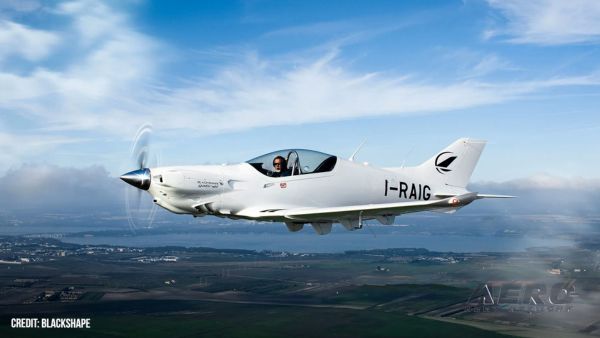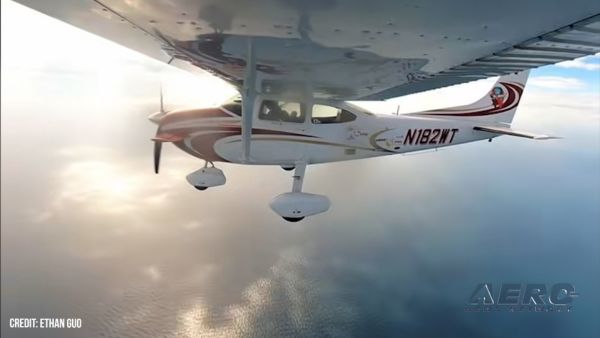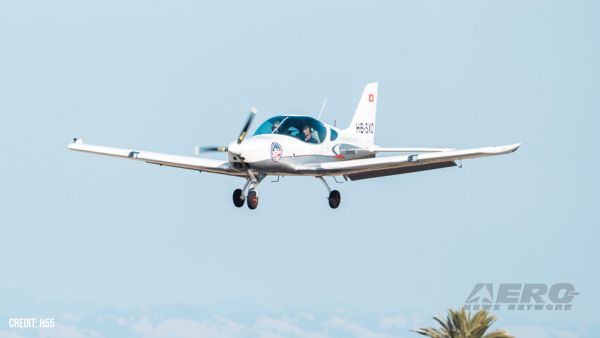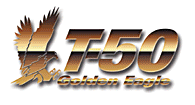 Officials from the Republic of Korea Air Force
(ROKAF), Korea Aerospace Industries (KAI) and Lockheed Martin have
confirmed that the T-50 Golden Eagle development program is on
track and the supersonic trainer is performing well in every
aspect. Lt. Col. Cho Gwang Je, ROKAF T-50 chief test pilot, gave an
overview of the T-50 development program, focusing on the
flight-test activities. Cho, a seasoned fighter pilot and test
pilot, was the first to fly the T-50 on Aug. 20, 2002, and is the
high-time T-50 pilot.
Officials from the Republic of Korea Air Force
(ROKAF), Korea Aerospace Industries (KAI) and Lockheed Martin have
confirmed that the T-50 Golden Eagle development program is on
track and the supersonic trainer is performing well in every
aspect. Lt. Col. Cho Gwang Je, ROKAF T-50 chief test pilot, gave an
overview of the T-50 development program, focusing on the
flight-test activities. Cho, a seasoned fighter pilot and test
pilot, was the first to fly the T-50 on Aug. 20, 2002, and is the
high-time T-50 pilot.
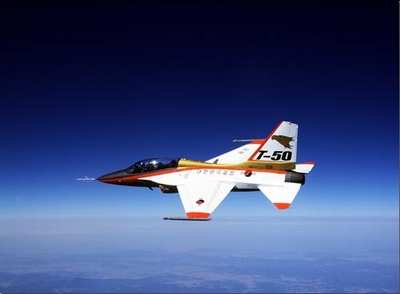
"The T-50 is a real joy to fly and handles well throughout the
flight envelop tested," Cho said. "It should be a very safe
aircraft, and our student pilots should adapt to it very quickly.
More importantly, our pilots will be able to transition very
quickly to our modern fighters, the KF-16 and the F-15K, because of
the skills learned in flying the T-50. Not only will they be
familiar with the performance and handling qualities of a
fighter-type aircraft, they will also have the experience of
operating a modern fighter cockpit and a well-integrated avionics
system."
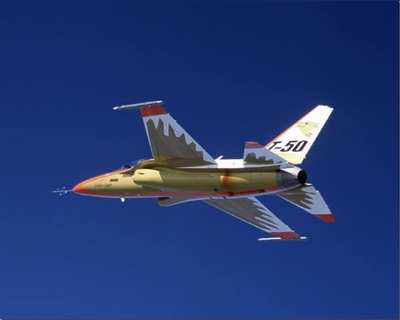
Cho said the T-50 will have several high-technology features,
which will enhance pilot training compared to current trainers. One
is the full- authority digital flight control system, which
features selectable maneuver- performance levels for phased
learning and an active side-stick controller that provides feedback
to the pilot in the other cockpit. Another is the data-transfer
system, which has embedded training functions that, together with
audio/video recording, should significantly aid in post-flight
debriefings.
ROKAF pilots selected for fighter assignments subsequently will
receive tactical training in the T-50 Lead-In Fighter Trainer
(LIFT) version, which also has a multimode radar, an internal 20 mm
gun and an armament system for delivering a variety of air-to-air
and air-to-surface weapons. The T-50 will reduce the number of
trainer types and transition times for fighter pilots, plus it will
reduce the initial pilot combat qualification burden on operational
units. These factors will provide world-class training at reduced
total training costs.
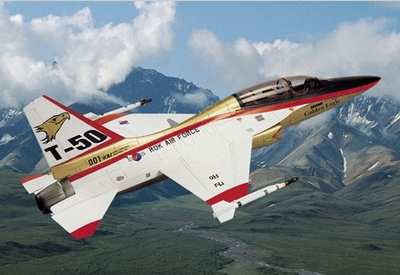
"We have taken the aircraft to its operational ceiling of 40,000
feet and flown it supersonic to Mach 1.2 (1.2 times the speed of
sound)," Cho said. "We are using a stair-step approach of expanding
the flight envelop to the flight-test limits. We are looking
forward to start of flight test on our two T-50 LIFT aircraft later
this summer."
The T-50 Golden Eagle is a supersonic advanced jet trainer being
developed by KAI for the Republic of Korea Air Force. Lockheed
Martin, as principal subcontractor to KAI, is providing technical
expertise for the program and is responsible for developing the
T-50 avionics system, flight control system and wings. The two
companies are cooperatively marketing the T-50 internationally.
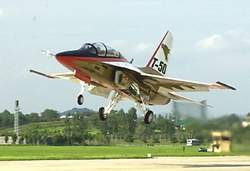 The
T-50 Full-Scale Development program began in 1997 and will continue
through 2005. Initial production authorization is planned for late
2003 with production deliveries to begin in 2005.
The
T-50 Full-Scale Development program began in 1997 and will continue
through 2005. Initial production authorization is planned for late
2003 with production deliveries to begin in 2005.
The T-50 will have the maneuverability, endurance and advanced
systems to prepare future pilots to fly current and next-generation
fighters like advanced F-16s, the F/A-22 and the F-35 Joint Strike
Fighter. These same characteristics give it an excellent capability
as a lead-in fighter trainer and potential light-combat aircraft
derivative in many air forces.
 NTSB Final Report: Douglas A-4K
NTSB Final Report: Douglas A-4K ANN FAQ: Q&A 101
ANN FAQ: Q&A 101 Classic Aero-TV: PBY Catalina--From Wartime to Double Sunrise to the Long Sunset
Classic Aero-TV: PBY Catalina--From Wartime to Double Sunrise to the Long Sunset ANN's Daily Aero-Term (07.01.25): Advanced Air Mobility (AAM)
ANN's Daily Aero-Term (07.01.25): Advanced Air Mobility (AAM) ANN's Daily Aero-Linx (07.01.25)
ANN's Daily Aero-Linx (07.01.25)





